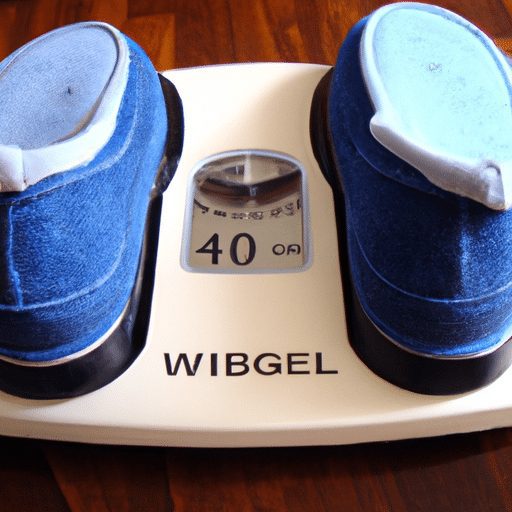In the world of footwear, there exists a wide spectrum of options, ranging from plush and cushioned to minimalist and lightweight. But what exactly sets cushioned shoes apart from their minimalist counterparts? Well, cushioned shoes are built with an emphasis on comfort and shock absorption, boasting ample padding and support to keep your feet happy and protected. On the other hand, minimalist shoes take a less-is-more approach, favoring a barefoot-like experience with little to no cushioning. Join us as we explore the contrasting features and benefits of these two types of shoes, helping you make an informed choice for your next stride.
Review contents
Cushioned Shoes
Definition
Cushioned shoes are a type of footwear that is designed with extra padding and support in the midsole area. This padding is usually made from materials such as foam or gel and is intended to provide a soft and comfortable feel underfoot.
Design Features
Cushioned shoes typically have a thicker and more substantial midsole compared to minimalist shoes. The midsole is the layer between the outsole and the upper part of the shoe, and it is where most of the cushioning and support is located. Additionally, cushioned shoes often have additional cushioning in the heel area to absorb impact during heel strikes while walking or running.
Advantages
The main advantage of cushioned shoes is the superior level of comfort they offer. The extra padding in the midsole provides a soft and plush feel, making it ideal for individuals who are looking for a cushioned and supportive experience. Cushioned shoes are particularly beneficial for people with foot conditions, such as plantar fasciitis or shin splints, as they help absorb impact and reduce the strain on these problem areas.
Another advantage of cushioned shoes is the enhanced shock absorption they provide. The extra padding in the midsole helps to absorb the impact forces generated during each step, reducing the stress on the joints, including the ankles, knees, and hips. This can be especially beneficial for individuals with joint problems or those who engage in high-impact activities such as running or aerobics.
Disadvantages
While cushioned shoes offer great comfort and shock absorption, they do come with a few disadvantages. One notable disadvantage is the added weight that comes with the extra cushioning. The thicker midsole and additional padding can make cushioned shoes heavier compared to minimalist shoes. This extra weight can potentially affect performance and may tire out the legs faster.
Another disadvantage of cushioned shoes is the reduced ground feel. The extra padding and support in cushioned shoes can limit the amount of sensory feedback from the ground. This reduced ground feel may affect balance and proprioception, especially for activities that require precise foot placement, like rock climbing or trail running.
Minimalist Shoes
Definition
Minimalist shoes, also known as barefoot shoes or minimalist running shoes, are designed to provide a minimal amount of cushioning and support. These shoes aim to recreate the feeling of running or walking barefoot while still providing some protection and traction.
Design Features
Minimalist shoes have a thin and flexible sole that closely mimics the natural shape and movement of the foot. They typically have a zero-drop or low-drop design, meaning that there is little to no height difference between the heel and toe. This encourages a more natural foot strike, with an emphasis on landing midfoot or forefoot rather than the heel.
Minimalist shoes also have a wide toe box, allowing for natural toe splay and better overall foot alignment. The upper part of the shoe is usually made of lightweight and breathable materials to ensure maximum comfort and flexibility.
Advantages
One of the primary advantages of minimalist shoes is the improved foot strength and balance they promote. With their thin and flexible sole, minimalist shoes require the muscles and ligaments of the feet and ankles to work harder to stabilize the body during movement. This can lead to stronger and more resilient feet over time.
Minimalist shoes also encourage a more natural running or walking gait. By promoting a midfoot or forefoot strike, they reduce the impact forces on the body and encourage a smoother and more efficient stride. This can potentially help decrease the risk of certain injuries, such as repetitive stress injuries or knee pain.
Disadvantages
While minimalist shoes have their benefits, they may not be suitable for everyone. One disadvantage is the lack of cushioning and support compared to cushioned shoes. The minimal amount of padding in minimalist shoes means that they may not provide enough shock absorption for individuals with certain foot conditions or those who engage in high-impact activities.
Another potential disadvantage is the transition period when switching from traditional, cushioned shoes to minimalist shoes. It takes time for the muscles and ligaments of the feet and lower legs to adapt to the different demands of minimalist footwear. This transition period can be challenging and may increase the risk of foot or calf muscle injuries if not approached gradually and with caution.
In conclusion, cushioned shoes offer superior comfort and shock absorption, making them suitable for individuals looking for a cushioned and supportive experience. They provide extra padding in the midsole, which helps absorb impact and reduce strain on the joints. On the other hand, minimalist shoes aim to recreate the sensation of running or walking barefoot and promote foot strength and a more natural gait. They have a thin and flexible sole and encourage a midfoot or forefoot strike. However, they lack the cushioning and support of cushioned shoes and may require a transition period for proper adaptation. Choosing between cushioned and minimalist shoes ultimately depends on individual preferences, foot conditions, and the intended use of the footwear.








